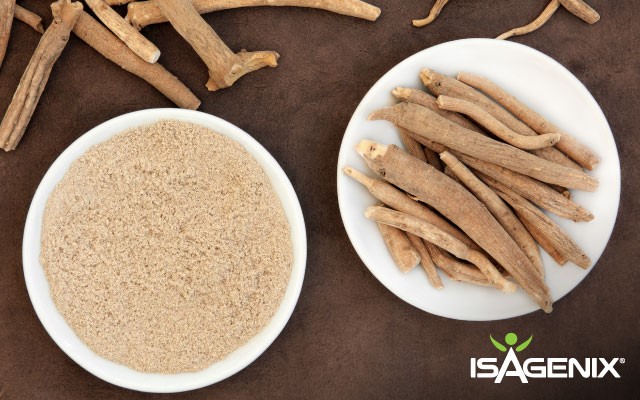Eleuthero has been used in China for more than 2,000 years and is used in traditional Chinese medicine for stress and to support physical endurance (1, 2). Modern use of the root was popularized after the former Soviet Union decided to include it in its space and sport programs (3, 4).
Eleutherosides, chemical compounds in Eleuthero root, are responsible for endurance-enhancing effects, building stamina, and for protecting cells and organs against stress (2, 3, 4, 5, 6, 11). Eleutherosides are the key components in eleuthero that contain more than 35 of these chemically diverse compounds (3, 5). Certain eleutherosides appear to be associated with immune function and endurance-enhancing health benefits (11).
But why is eleuthero frequently called Siberian ginseng? Eleuthero consists of the dried roots and rhizome of the species Eleutherococcus senticosus, belonging to the same family as ginseng (4, 6). Other well-known plants in this family include the paper rice plant, which is the source of rice paper and ornamental ivy. Eleuthero is a tall two-meter high hardy shrub native to eastern Siberia, Korea, and the Shashi and Hopi Provinces in China. The mystique of the name, Siberian ginseng, was once probably commercially driven, but considered confusing by botanical experts (7).
Health Benefits
From the 1940s through the 1960s, Soviet scientists conducted clinical research and made eleuthero part of the regimen of Olympic athletes claiming it helped with exercise performance, and quicker recovery after a competition (3). World pharmacopoeias describe it as a tonic to help in cases of decreased performance because of fatigue and sensation of weakness (10). In addition, it has been shown to enhance vigor, improve general health, and provide potential healthy aging benefits (2, 3, 4, 5, 6, 7). The typical preparation form is an herbal infusion made with 0.5-4 g of the root or 90-180 mg of as dry aqueous extract (5). Traditional Chinese medicine practitioners have used larger amounts (up to 24 g) without any adverse effects (1, 9).
Isagenix Products Contain Eleuthero
Isagenix has several products providing different levels of the adaptogenic benefits of eleutherococcus root in the form of root powder or extract that is prepared following pharmacopoeial methods. For example, Ionix® Supreme, e+™, and Cleanse for Life® all contain eleuthero. Serving sizes are in line with the average recommended by pharmacopoeias so you can be confident you are reaping the full benefits of eleuthero in products that are effective and safe.
References
- Pharmacopoeia of the People’s Republic of China. Vol. I (English ed.). Beijing: Chemical Industry Press; 1997.
- Huang L, Zhao H, Huang B, Zheng C, Peng W, and Qin L. Acanthopanax senticosus: Review of Botany, Chemistry and Pharmacology. Pharmazie 2011; 66, 83–97.
- Blumenthal M, Hall T, Goldberg A, Kunz T, Dinda K, Brinckmann J, et al. The ABC Clinical Guide to Herbs. Austin, TX: American Botanical Council; 2003.
- Saluzki D, Smolarz HD. TLC profiling, nutritional and pharmacological properties of Siberian ginseng (Eleutherococcus senticosus) cultivated in Poland, Pak. J. Pharm. Sci. 2016; 29, 1497-1502.
- Radix Eleutherococci In: WHO monographs on selected medicinal plants, Vol II. Geneva: World Health Organization; 1999.
- European Medicines Agency, Assessment report on Eleutherococcus senticosus (Rupr. et Maxim.) Maxim., radix Eleutherococci radix, Eleutherococcus senticosus (Rupr. et Maxim.) Maxim (eleutherococcus root). London, UK: European Medicines Agency; 2014.
- Foster S, Tyler VE. Tyler’s Honest Herbal: A Sensible Guide to the Use of Herbs and Related Remedies, 4th Edition. New York: Haworth Press; 1999,
- Blumenthal M et al., eds. The complete German Commission E monographs. Austin, TX: American Botanical Council; 1998.
- Joel Penner, O.M.D., L.Ac. American Dragon, available at: http://www.americandragon.com/Individualherbsupdate/CiWuJia.html. Accessed October 12, 2017.
- Committee on Herbal Medicinal Products (HMPC), Community herbal monograph on Eleutherococcus senticosus (Rupr. et Maxim.) Maxim). London, UK: European Medicines Agency; 2014.
- Anon, Eleutherococcus senticosus monograph. Alt Med. Rev; 2006; 11, 151-155.





